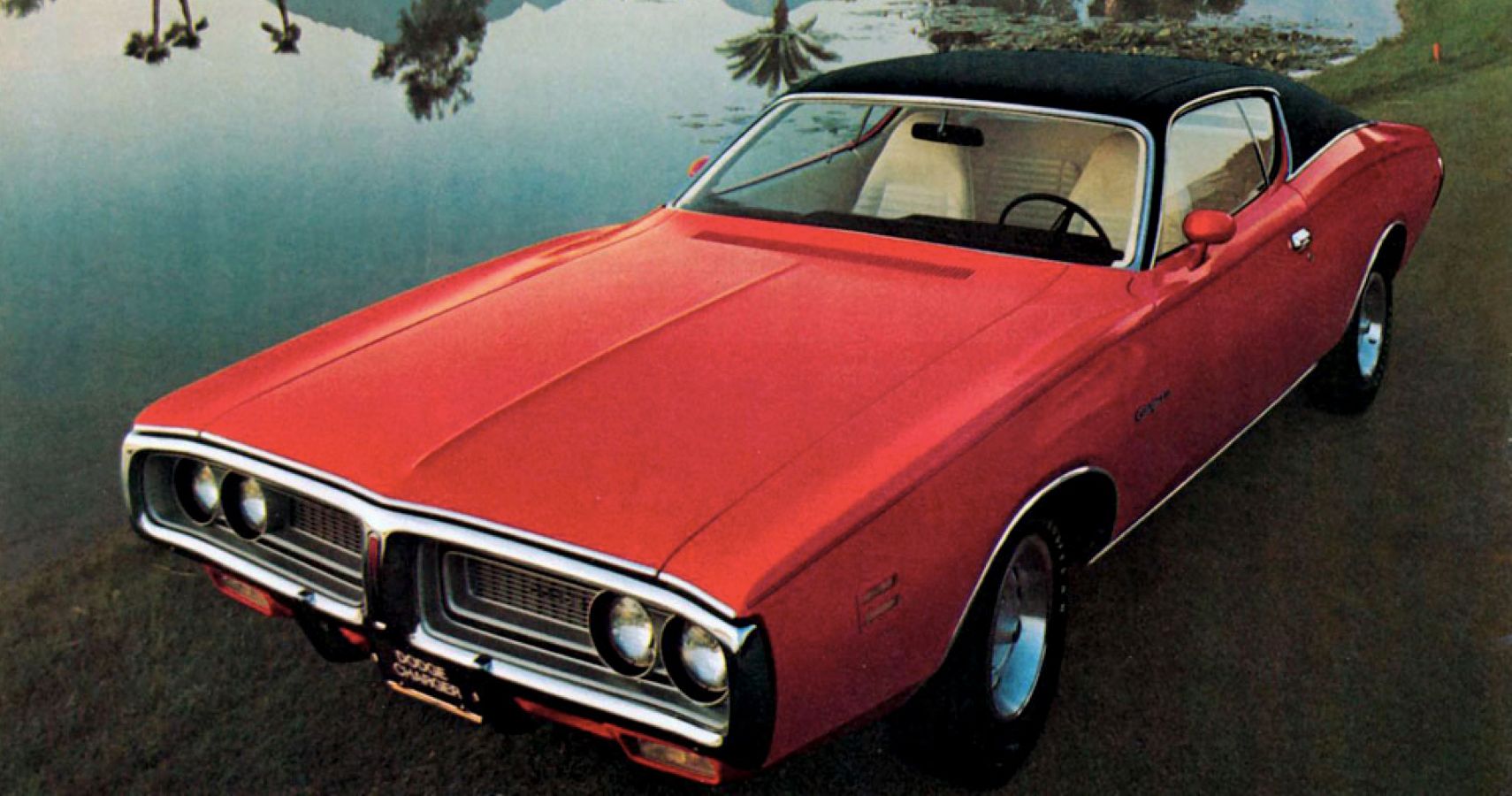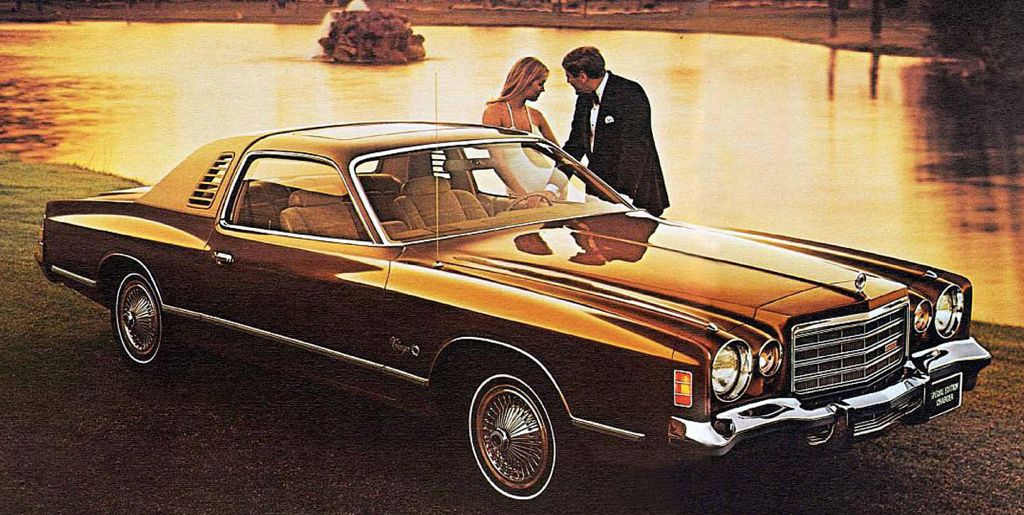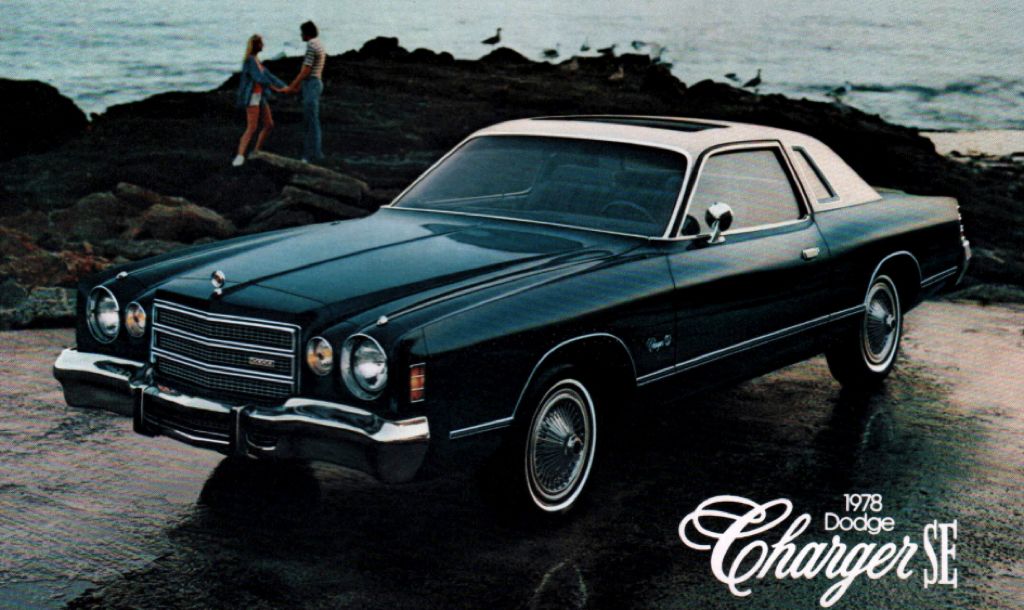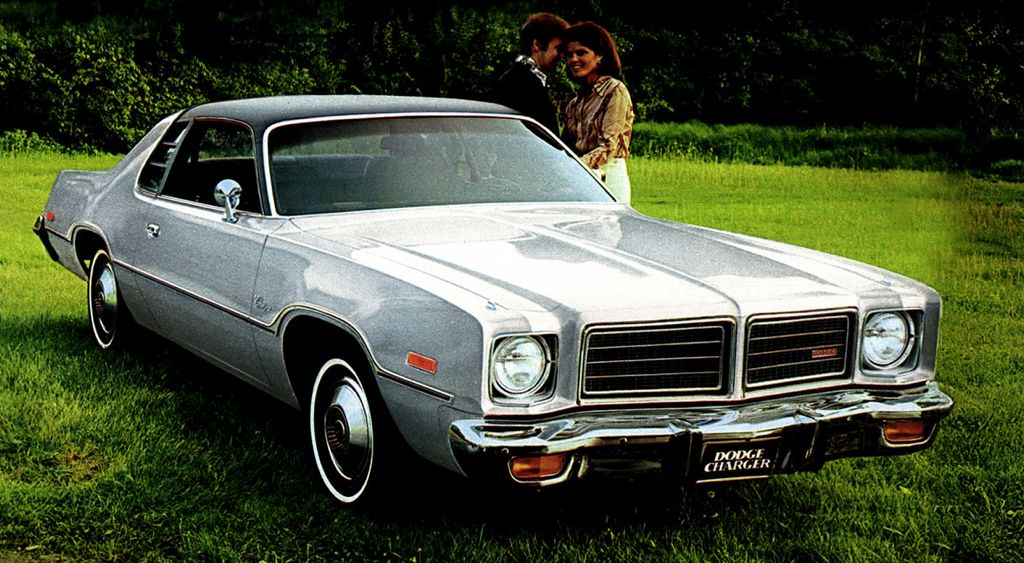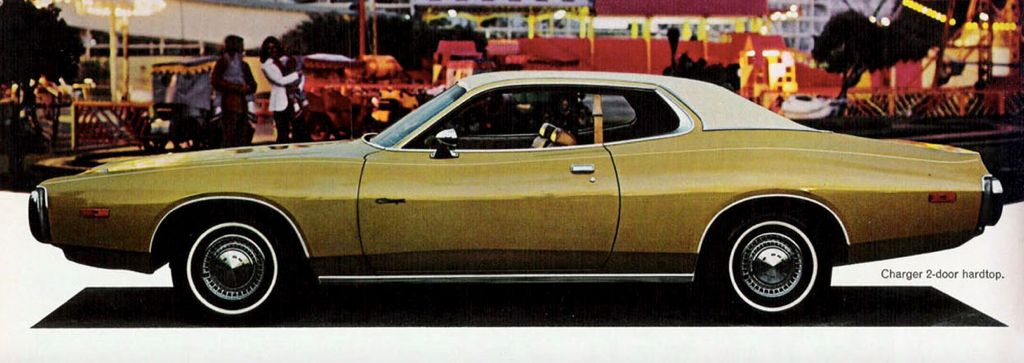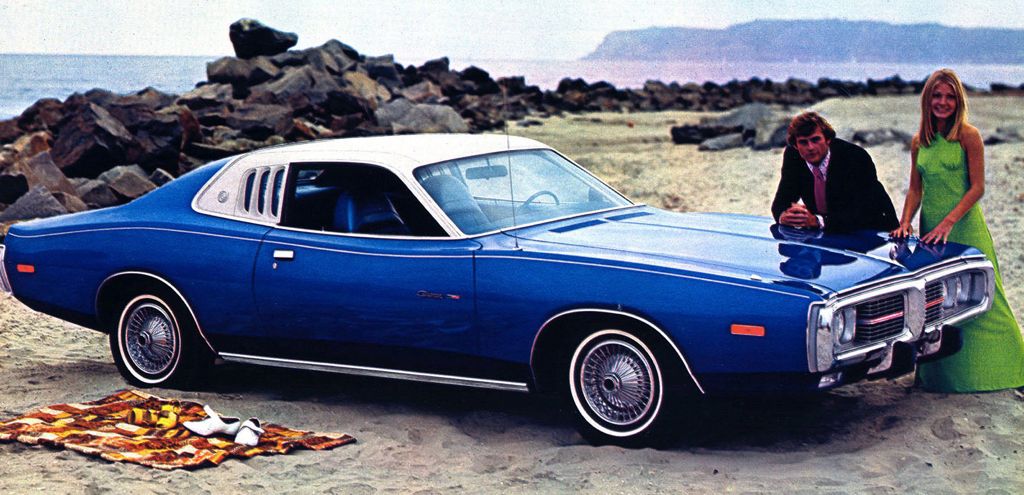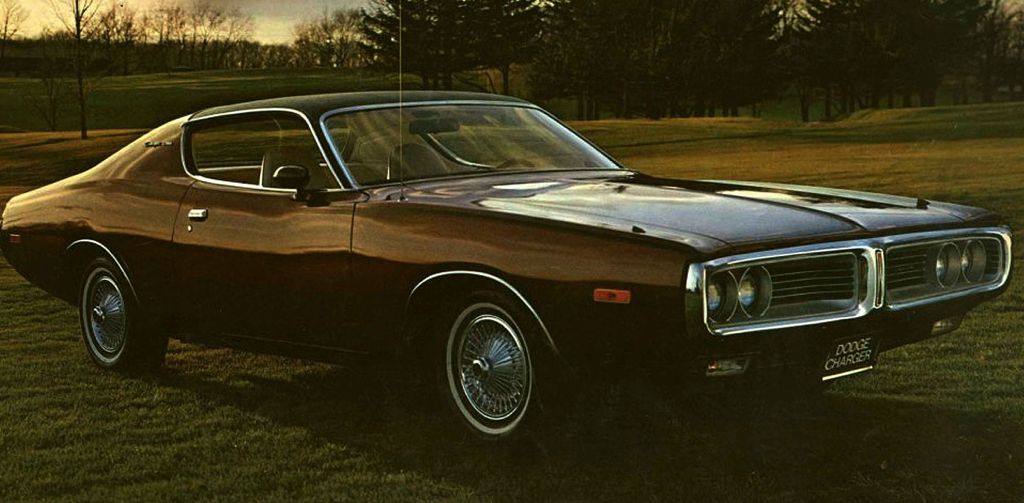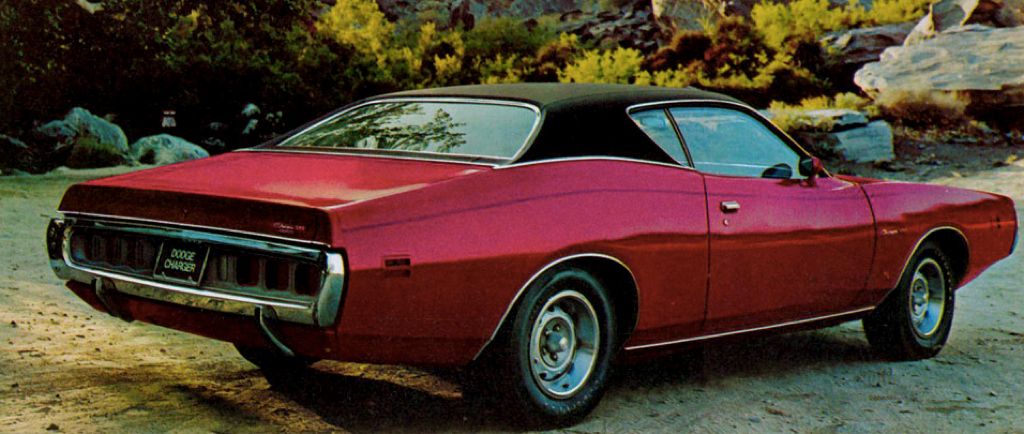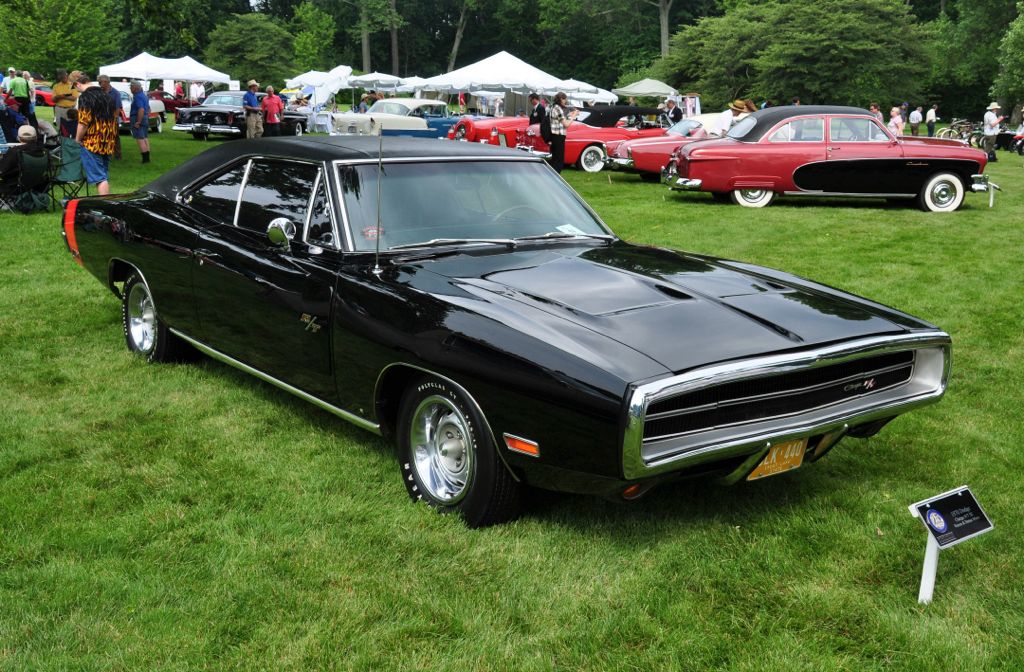The Dodge Charger began its life as a stylish and powerful performance car that became a ’60s automotive icon. The current Charger translates that style and power into a practical four-door package that also makes an especially fearsome police cruiser.
In the '70s, however, the Charger struggled a bit with its identity… transitioning from sleek muscle car to plush luxury coupe. This confusion came as government regulations changed and Chrysler’s financial situation became more desperate. Despite that, the company’s effort to keep the name alive has been successful, even if every model year wasn’t.
9 1975
Dodge had positioned the Charger as a performance car since its introduction in the mid-'60s. That changed in 1975 when Chrysler decided it didn't have the money for all-new sheet metal for Dodge’s flagship muscle car. Sales for all performance cars were falling as buyers pivoted to “personal luxury” coupes. As a result, Dodge rolled out the Charger SE, a plush two-door that was virtually identical to Chrysler’s Cordoba, down to using the same front clip.
Underneath, the ’75 Charger still rode on the B-body platform from the previous year, but the package was updated inside and out, with the focus on creature comforts. The final sign that the car’s mission had changed was the appearance of the “Charger” name in flowery script on the front fenders.
8 1978
This was the debut year of Dodge’s Magnum personal car, with its scalloped fenders and clear retractable headlight doors, designed to replace the Charger. But Dodge still sold the virtually identical Charger SE, apparently to use up parts from the previous model year. However, this wasn’t a mere carryover edition: shoppers could still choose one of three different V8 engines and a complete palette of exterior colors.
This would be the final appearance of the Charger name in the 1970s (there was no ’79). The next Charger would be a dressed-up version of the Omni 024 sports hatch, arriving in showrooms in the early 80s and eventually getting the Shelby turbo treatment.
7 1976
This might have been the most confusing model year for the ‘70s Chargers. Dodge offered a “Daytona” edition of the Charger SE … but unlike the legendary aero Daytona of 1969, this was largely an appearance package, with an uncharacteristically subtle two-tone paint and graphics scheme.
Below the SE and Daytona were a pair of coupes called Charger and Charger Sport … which were nothing more than prosaic two-door versions of the Coronet sedan. Fortunately for what was left of the image of the Charger brand, the less-interesting two-doors moved to the Monaco line in ’77.
6 1977
The Charger was back down to SE and Daytona for ’77, with a standard 5.2-liter (318 ci) V8 drinking through a two-barrel carburetor and driving the rear wheels through an economy-minded 2.7-to-1 final drive. Two other V8s were available, but each one carried a gas mileage penalty over the 318, despite exceedingly high gearing.
Buyers could also order their new Chargers with the latest in ‘70s roof technology: removable T-tops. However, sales for Dodge’s personal luxury car in ’77 were less than a third of its more expensive Cordoba twin.
5 1974
This was the last year of the fuselage-bodied Charger, but Dodge was already moving its sporty coupe into a luxury direction. The biggest photos in the ’74 brochure showed Charger SEs with half-vinyl roofs, triple opera windows, and posh “SE Brougham” cloth seats.
Fortunately, Dodge still offered a full complement of engines. including the 7.3-liter (440 ci) V8 in the Charger, though only on the higher trim levels. But the Rallye models — which replaced the mighty R/T two years previous — were reduced to two tiny drawings on the back cover. Performance was literally taking a back seat.
4 1973
For ’73, Dodge opened up the rear quarter windows on the “great shape” Charger, the easier to fit louver-like opera windows to the SE edition. Fitted with wire-like wheel covers, the plush Brougham interior, and a stand-up hood ornament, the SE did a pretty convincing impression of a Cougar XR-7, though this was the first year that the SE was not available with hidden headlights.
Sports-minded buyers could spec a Charger Rallye with a 440 and a four-speed manual transmission if they were so inclined, while budget shoppers could order their Chargers with a slant-six and a three-on-the-tree manual (which finally went away after ’74). Customers seemed to appreciate the variety: figures on Allpar show ’73 was the biggest sales year for Charger in that decade, with about 120,000 copies finding homes.
3 1972
Dodge started upping its investment in the top-of-the-line Special Edition hardtop this year. Its full vinyl top with largely blanked-off quarter windows gave the sleek coupe a more formal air than its stablemates. Buyers seeking performance could select the new-for-’72 “Rallye” package, with simulated door louvers recalling the extreme sculpting of the late-60s Chargers.
But the R/T and the “500” were gone this year; blame higher insurance rates in part for that marketing decision. The good parts from the R/T were still available on the other Chargers, including the still-powerful 440 V8, but horsepower ratings were dropping as Chrysler adjusted to lower-octane unleaded gas.
2 1971
Dodge called the Charger’s all-new fuselage-style body the “Great Shape,” and it’s tough to argue with that statement. Graceful and muscular at the same time, the exaggerated Coke-bottle shape made the mid-sized coupe look smaller than it was. 1971 was the last year for the R/T, available with a retractable “Air Grabber” hood scoop and an array of lurid colors.
And since Dodge dropped the Coronet two-door for ’71, the “Super Bee” budget-performance package popped up on the Charger as a one-year option with the well-known 6.3-liter (383 ci) V8 and the familiar cartoon bee graphics standard.
1 1970
Understanding why the 1970 Charger lives at the top of the ‘70s pecking order begins by looking at it. Go ahead, take a second. We’ll wait.
This was the final year of the shape widely regarded as one of the best-looking “muscle cars” of the era … and compared with the polarizing “dual-nostril” look on the sister Coronet, the Charger and its concealed-headlamp front end were especially clean and handsome. And the Dodge Boys were only too happy to load up your Charger with any one of five available V8 engines, including the legendary (and expensive) Hemi, or focus on luxury with the SE edition and its genuine leather seats.

